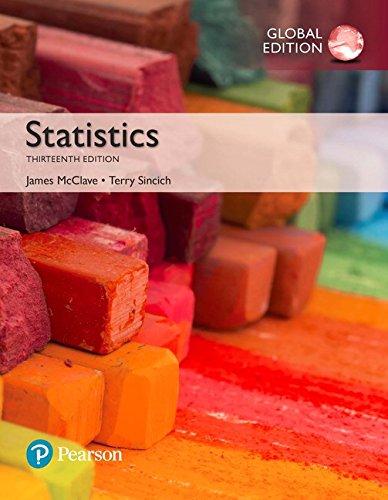Public perceptions of health risks. In the Journal of Experimental Psychology: Learning, Memory, and Cognition (July 2005),
Question:
Public perceptions of health risks. In the Journal of Experimental Psychology: Learning, Memory, and Cognition (July 2005), University of Basel (Switzerland)
psychologists tested the ability of people to judge the risk of an infectious disease. The researchers asked German college students to estimate the number of people who are infected with a certain disease in a typical year. The median estimates, as well as the actual incidence of the disease for each in a sample of 24 infections, are listed in the table.
Consider the quadratic model E1y2 = b0 + b1 x + b2 x2, where y = actual incidence rate and x = estimated rate.
Infection Actual Incidence Estimate Polio 0.25 300 Diphtheria 1 1,000 Trachoma 1.75 691 Rabbit Fever 2 200 Cholera 3 17.5 Leprosy 5 0.8 Tetanus 9 1,000 Hemorrhagic Fever 10 150 Trichinosis 22 326.5 Undulant Fever 23 146.5 Well’s Disease 39 370 Gas Gangrene 98 400 Parrot Fever 119 225 Typhoid 152 200 Q Fever 179 200 Malaria 936 400 Syphilis 1,514 1,500 Dysentery 1,627 1,000 Gonorrhea 2,926 6,000 Meningitis 4,019 5,000 Tuberculosis 12,619 1,500 Hepatitis 14,889 10,000 Gastroenteritis 203,864 37,000 Botulism 15 37,500
a. Fit the quadratic model to the data, and then conduct a test to determine whether the actual incidence is curvilinearly related to the estimated incidence. (Use a = .05.)
b. Construct a scatterplot of the data. Locate the data point for botulism on the graph. What do you observe?
c. Repeat part
a, but omit the data point for botulism from the analysis. Has the fit of the model improved?
Explain.
Step by Step Answer:





